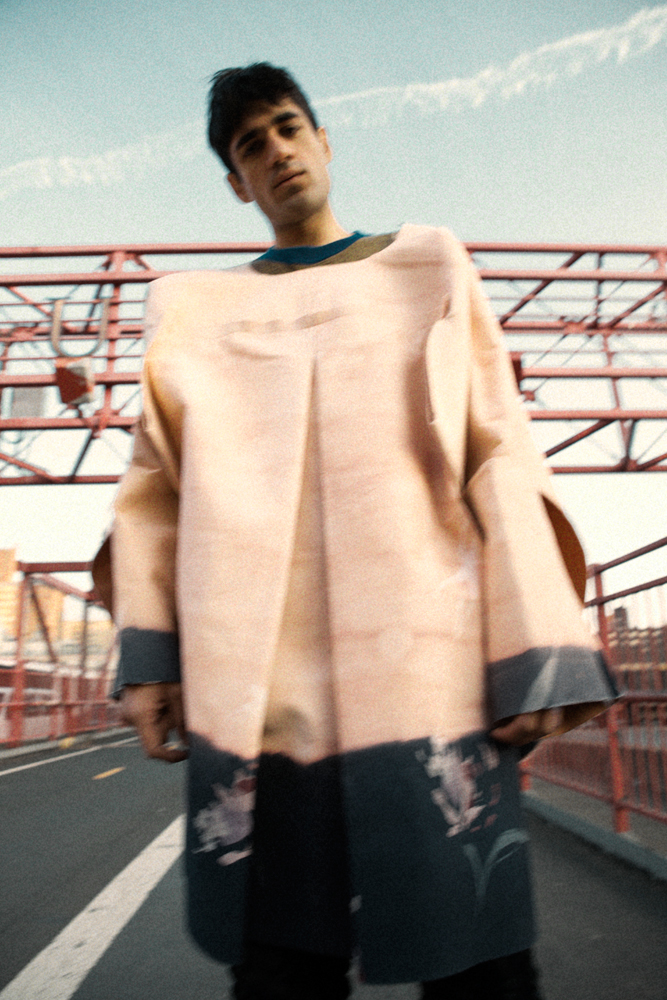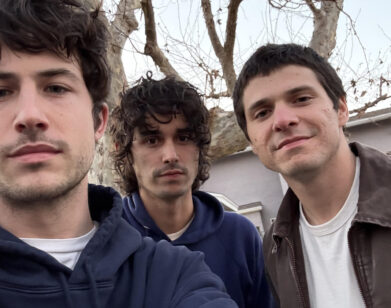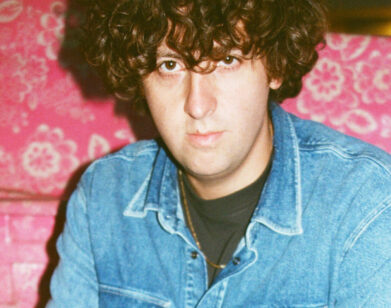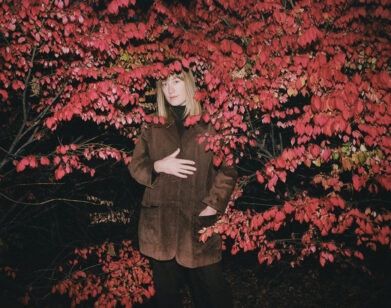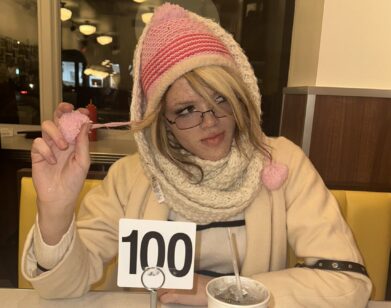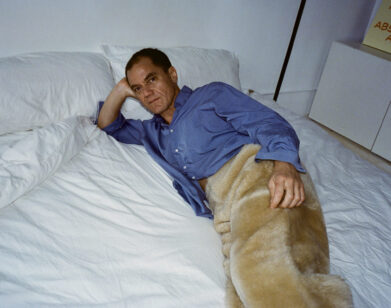Lord Raja’s Artistc Isolation
LORD RAJA IN NEW YORK, DECEMBER 2015. PHOTOS: JACK WATERLOT/DEFACTO. STYLING: AMY MACH. GROOMING: ADAM MARKARIAN AT DEFACTO FOR KERASTASE.
While there’s something to be said for honing in on a single craft, diversified talent is undeniably compelling. Take New York native Lord RAJA (neé Chester Raj Anand): the Brooklyn-based producer and DJ’s musical background involves a myriad of instruments, including piano, keyboard, and jazz percussion, but also an impressively young start to music production (he began producing at age six). Now, the 22-year-old has released two-full length albums, plenty of remixes and singles, and here, we’re pleased to premiere an exclusive playlist of RAJA remixes, Champion Edition.
Lord RAJA’s 2014 debut album A Constant Moth (Ghostly International) explored a combination of lush synths and hard-hitting beats, often inspired by classic hip-hop and lo-fi electroisms tied together in an impulsive yet polished knot. Furthering this trajectory, last month’s sophomore LP, PARA, holds true to Lord RAJA’s original and slightly unpredictable style and, without forgoing artistic depth, feels easier to digest and exudes a more cohesive sound. We spoke to Lord RAJA about his new music, learning to produce, and the importance of artistic simplicity.
MATHIAS ROSENZWEIG: Your background in music involves piano, keyboard, jazz percussion, and more. Where did it all begin?
LORD RAJA: My brother’s five years older than me and we would listen to things like Hot 97 in the backseat of our car. Timbaland’s production and stuff like that was super inspiring and together we got really interested in that. It got to a point where my brother had a friend who made a custom computer tower for us for music-making and he hooked us up with Fruity Loops. I started super early, just with that. We moved it down to the basement and we’d make music all day. [Since my brother was] older, he showed me how to do that when I was six. So when I was 12 or so, I think I had it down entirely. I want to find those really old files. We’d burn CDs all the time and have competitions of who made better beats.
ROSENZWEIG: You have said that this new album is your most successful attempt at making a “consistent body of work.” Can you explain?
RAJA: With this one, I was in a way more focused headspace. I wasn’t in school or anything, finally. I didn’t have any unwanted distraction. I had just gotten back from touring and traveling in India and I’d just gotten out of a pretty hectic relationship, also. I had time. I kind of crash landed in my house upstate before I moved to Brooklyn, so I was in the forest, pretty isolated. I had time to focus and be like, “Okay this sounds like an intro, this sounds like an outro, what’s the vibe here?” It’s all about peace. It felt like the solution to chaos. It’s a little bit more tied together.
ROSENZWEIG: It seems like isolation has been a key to your creative process for a while now.
RAJA: For these projects yeah, but especially since I moved to Brooklyn. I mean, it’s always environment-based. [At the time], I just happened to be upstate and isolated, or I happened to be at a school where I was isolated. But now that I’m in Brooklyn and I see the population, it’s super inspiring. I love adapting as quickly as possible to the environment. Now I’m hearing all this Reggaeton coming from the cars passing by.
ROSENZWEIG: Do you feel that being in Brooklyn is conducive to being an artist?
RAJA: I always wanted to be out here but it had to happen organically rather than just jumping out. Now I feel like I’m totally prepared to bask in it.
ROSENZWEIG: You’ve mentioned that this album is slightly more accessible, or perhaps methodic, than your previous work. Why do you think this the case?
RAJA: Accessibility can be a dangerous word. Basically, I was thinking of utility. Like look at Japanese cuisine—it’s simplicity. It doesn’t need to be overdone. I’ve been seeing so many people struggling. I’ve been seeing an ironic struggle of people trying to make a name for themselves by doing too much or claiming that innovation has to be exhausting. I think that you can get as much done effectively through simplicity. It doesn’t necessarily mean it’s going for accessibility or a pop sensibility, but I think innovation can be more effective if subtle.
ROSENZWEIG: The name of the album is PARA, which translates to “for” in English. Is the album for someone or something in particular?
RAJA: It was a fleeting idea in my head. I was going for a walk, I’d finished the album already, and I was listening back to it. My manager was like, “We need a name,” and I was like, “Yeah, damn, I need a name.” The word “para” just popped up in my head because I was thinking of inclusion and how important it is. I liked it being in a different language than the one I speak, and I feel like my music feels that way also—communicating in a different language. I liked the way it looked, actually, aesthetically.
ROSENZWEIG: Do you have plans for touring this album and have you had a chance to perform any of the new material live?
RAJA: Some of the songs I made during the last tour because I was getting a good impression of what people would want to listen to. It was a cool way to test out different tempos and sounds. I’m not sure if we have a designated tour for this album, but I will be touring Europe in February and in March I’m doing a mini U.S. run with TOBACCO.
ROSENZWEIG: How are you with performing live as opposed to being in a studio? Did you ever dislike being on stage?
RAJA: I used to feel that way only because I wasn’t sure how to do it, process-wise. But now I’m totally eager and I love it. I haven’t had a bad show since I switched up my style. I think, again, it has to be intuition-based and totally free form. I used to do this thing that was really ugly, where I’d plan out the whole set because I heard that that was what most people do, to kind of pre-orchestrate it, press play, and maybe trigger some things. But I can’t. It’s not fun at all. I’ve learned to not do that. Now I just improvise and it’s perfect. It’s about engaging with your environment and the energy.
ROSENZWEIG: Who do you think is listening to your music?
RAJA: I think right now it’s all over the place because I’ve been switching up my style so much. By this time next year, I think I’ll have a more definitive fan base, but hopefully a diverse one still. To be honest, I don’t really look up at my shows. I try not to look at the crowd because it could freak me out. But it is really cool to see the few die-hards there. I don’t think I have many, but when I do it’s really exciting.
ROSENZWEIG: This album feels quite jazzy in that the music doesn’t follow a formula. Outside of jazz percussion, what’s your relationship with the genre?
RAJA: I love jazz and I went through a phase where I listened to a lot of it, especially the drummers like Elvin Jones and Max Roach. I love them. But recently I’ve been finding myself diving deeper into classical music than jazz, which is kind of weird. I had experience with the genre in the jazz ensemble in my school, but the teachers didn’t really take it deep. I had to do some personal investigation.
ROSENZWEIG: For you, what defines success?
RAJA: I think success is perception. It’s like when you perceive the goal to be the process rather than the outcome. It’s like, if I just stay focused on my own procedure and really hone in on that craft, then success is inevitable. If I focus too much on just the outcome, that is encouraging and there is positive reinforcement, but then you can then get too ahead of yourself and do a victory lap way too soon. For me, it’s safest to just focus on staying motivated by the process and staying in love with the process, rather than trying to get too comfy or feel ready to retire. If you know yourself through the process, I think you’re prepared to have more faith. You won’t get too down on yourself if someone doesn’t like your work.
ROSENZWEIG: You said you want your music to sound like visuals. How do you incorporate visuals into your live performance or creative process?
RAJA: I recently got a projector and an old small VHS TV, so I would play movies and clips while making music, just to help get in that zone. Even if I don’t have those things and I want to get a hotel room or something, I’ll make sure that the room looks right and feels right. The aesthetic has to be right. Or I look at the picture of something and get some kind of inspiration. I love old movies too, old black and white movies. If it’s in color, I love ’60s movies like [Akira] Kurosawa or Citizen Kane, stuff like that.
With live show, at the beginning of my tour I was projecting this movie called Sans Soleil by Chris Marker. I did that for the first half and then for the second half I noticed I like no distractions at all. I even asked the light guy to make it completely dark. I think I prefer that now. Unless they’re really professional and ready to go, I don’t want some half-assed projection going with the DJ set because I feel like that’s kind of common. You’ve got to just feel the music. That’s what you go out for anyway.
ROSENZWEIG: Can you tell me about RAJA Remixes: Champion Edition?
RAJA: I made this tape within the first few days of moving to Brooklyn. It was a natural response to the energy I felt. There was a feeling to create this for people to listen to in subway tunnels or on walks in the park. I would start a beat and then hear the voice of an artist I like in my head, like J Balvin or Beenie Man. I wanted to make something to dance to and combat the tropes of electronic music. I was tired of people standing at shows with their arms crossed.
PARA IS AVAILABLE FOR DIGITAL DOWNLOAD NOW AND WILL BE RELEASED ON VINYL NEXT FRIDAY, JANUARY 22. FOR MORE ON LORD RAJA, VISIT HIS FACEBOOK.

